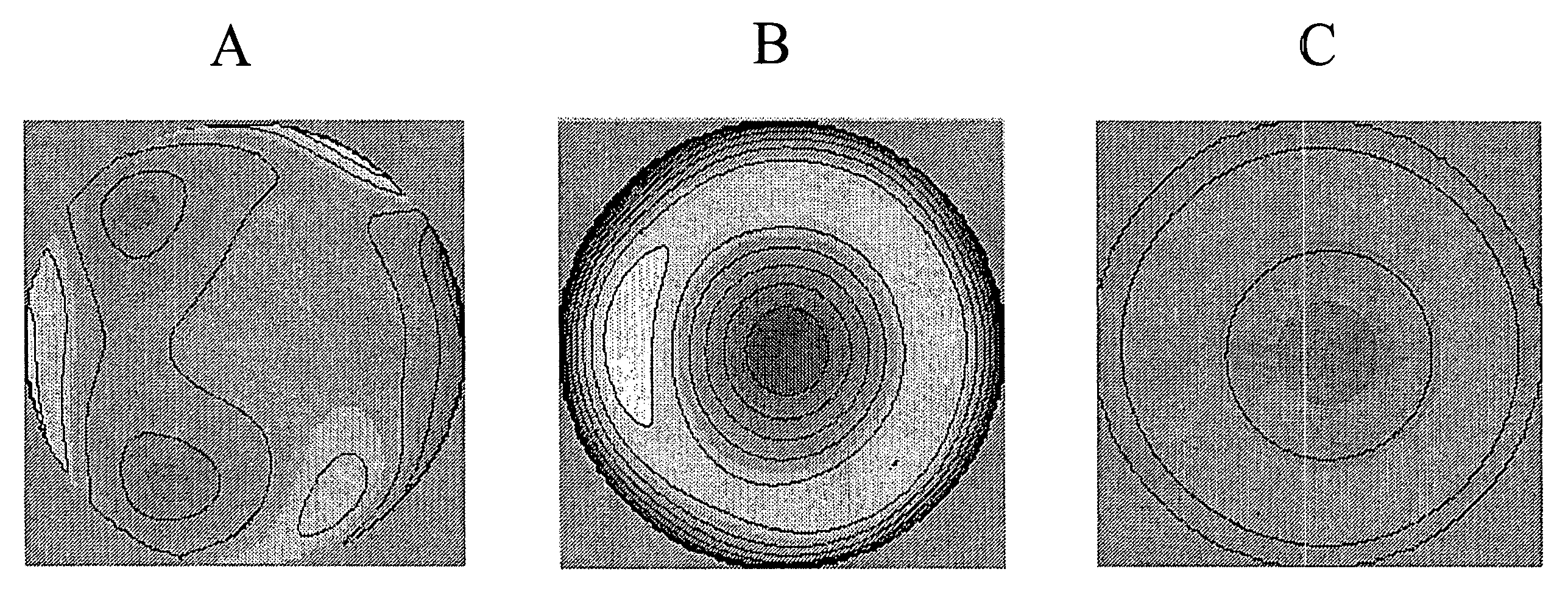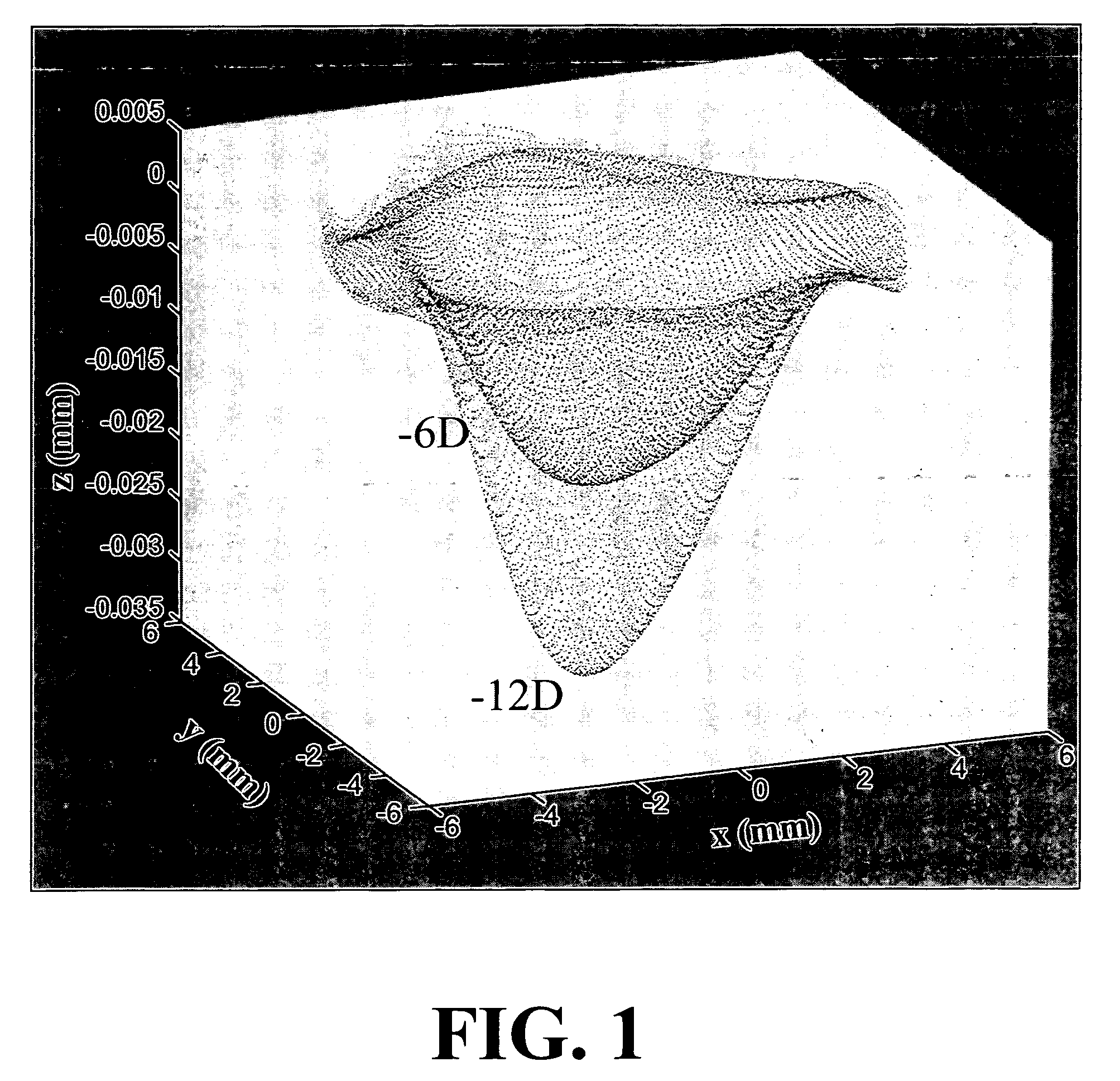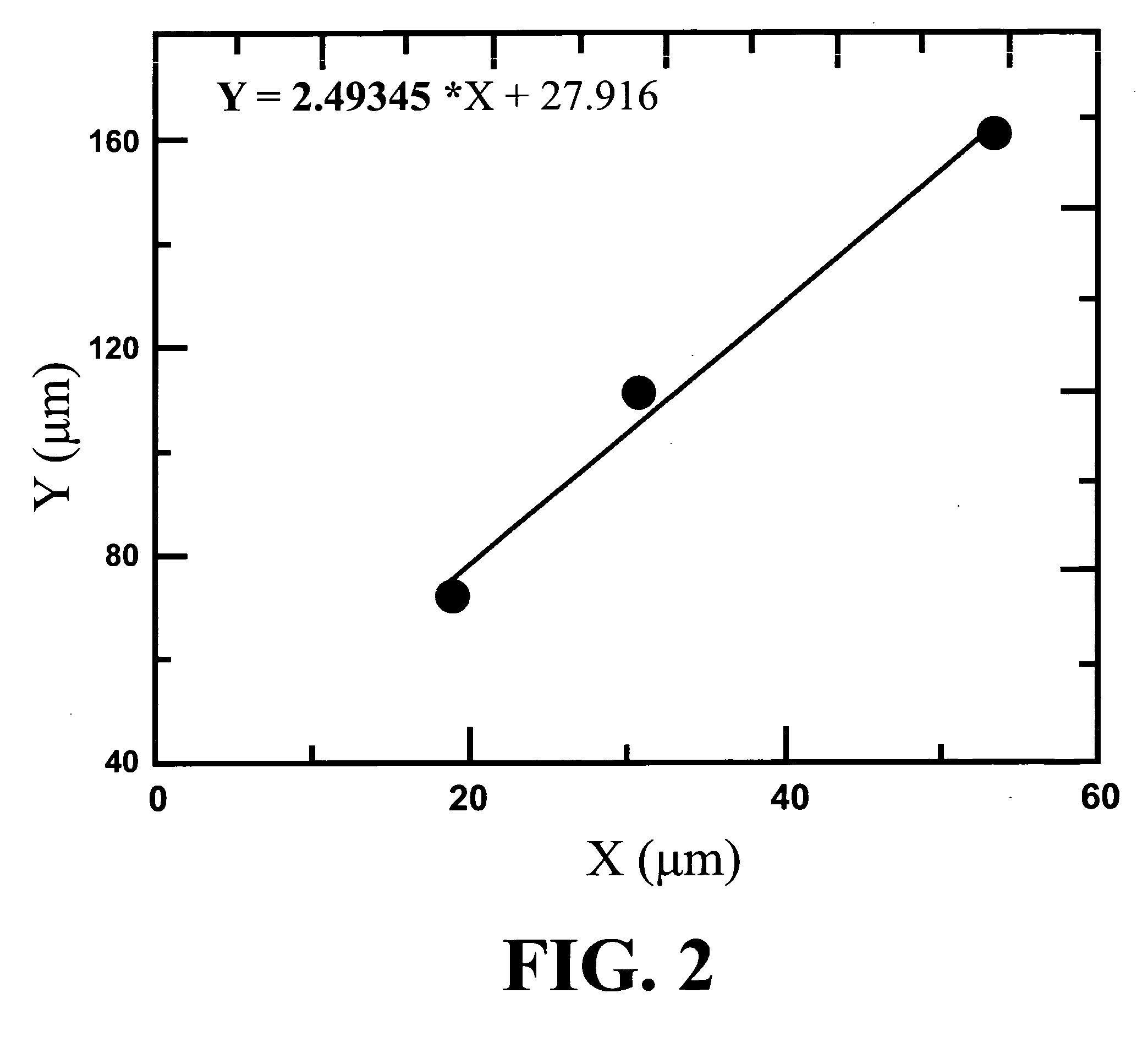Method of preventing the induction of aberrations in laser refractive surgery systems
a technology of aberration and laser refractive surgery, applied in the field of ophthalmology, can solve the problems of over-estimation of the contribution of biomechanical effects in the cornea in previous works, and the generic theoretical factors proposed in the literature do not manage to explain the clinical data obtained in patients, so as to achieve the effect of improving optical quality
- Summary
- Abstract
- Description
- Claims
- Application Information
AI Technical Summary
Benefits of technology
Problems solved by technology
Method used
Image
Examples
Embodiment Construction
[0025] The present invention is introduced as a calibration protocol of lasers for the treatment of the cornea (or any lens in general) and fit of the ablation algorithms, consisting of the following stages:
[0026] 1. Manufacture of a physical model in plastic (for example in PMMA) with the shape of the cornea. The model must be constructed in a material with a response to the ablation by excimer laser of an order of magnitude similar to that of the corneal tissue, and be polished such that it has a reflecting surface. The shape of the surface will be assessed by means of a corneal topograph.
[0027] 2. Ablation of the surfaces described in stage 1 by means of PTK (phototherapeutic keratectomy) for a standard ablation depth and treatment zone. In theory, this method eliminates a constant thickness of tissue by the application of the same energy at each corneal position, though changes in the efficiency of the laser with the corneal position will produce a non-uniform ablation of the ...
PUM
 Login to View More
Login to View More Abstract
Description
Claims
Application Information
 Login to View More
Login to View More - R&D
- Intellectual Property
- Life Sciences
- Materials
- Tech Scout
- Unparalleled Data Quality
- Higher Quality Content
- 60% Fewer Hallucinations
Browse by: Latest US Patents, China's latest patents, Technical Efficacy Thesaurus, Application Domain, Technology Topic, Popular Technical Reports.
© 2025 PatSnap. All rights reserved.Legal|Privacy policy|Modern Slavery Act Transparency Statement|Sitemap|About US| Contact US: help@patsnap.com



